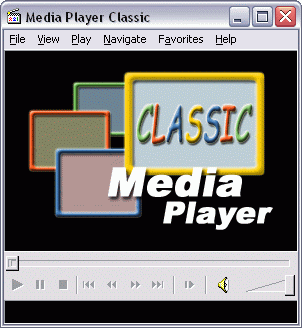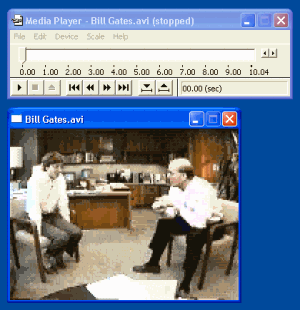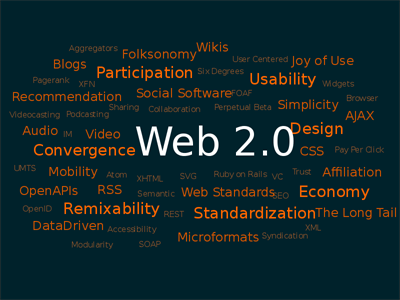I thought Levi’s had sold all their looms to the Japanese and so jeans cut on the selvedge were no longer available. Not so it seems with this reissue of a 1966 classic ‘redline’ 501. I thought I was going to have to revisit Ueno station in Tokyo to get some of these, and maybe I will as I recall seeing some with a 1944 cut there. Here’s the full spiel on Levi’s 501:
Month: April 2010
I started to think this morning about possible ways that new developments in social intranet technologies might disrupt and accelerate the old formations of 1.0 intranets. For a good into into the evolution see The social Intranet by Toby Ward. Toby rightly points out that not many, in fact only 15% of companies have a full portal solution. Even those with apparent portal solutions often have in reality either a more ‘bespoke’ approach underneath the top layer code or a SharePoint supported deployment.
In Cisco’s case for example, when I worked on it this comprised a rich layer of XML that supports a wide range of social technologies and rich media such as industrial grade Video on Demand and self-serve ‘YouTube’ style video. The aim here, was to bring these together to create what I dubbed at the time a ‘collaboration layer‘ of social technologies embedded into the local intranet.
Let’s get back to the more mundane and prosaic, for many organisations their intranet is simply ‘flat html’. What started to get me thinking was what might change to disrupt a ‘traditional’ intranet, what Toby calls the 1.3 and 1.4 models and to potentially catapult it into a 2.0 world.
One such way might be the evolution of existing tools into something much more social. One obvious candidate, at least to me is Windows Media Player (WMP). This tool does what it says, it plays media and has been doing that in pretty much unchanged form since Windows 3.0. What if it were social? This could be completely disruptive but very productive.
Here’s the original and XP version:


What a Windows Social Media Player might do
A windows social media player might for example support feedback – embed it into an intranet page and hey presto, native supported feedback on the video. And then tagging, I might want to tag the video and any comments made. And of course I’d want to rate it. If the video was on topic x or y then I might also want to synch it up to a discussion forum, to drop it into a blog and link it up. Or basically let it stand alone, my imagined Windows Social Media Player would become a self-standing fully SLATES supported video blogging platform.
You can see how this all fits together (and what I’ve described isn’t so far from the collaborative layer I mentioned above). If such a Windows Media Player were to be built I think Microsoft’s temptation and inclination might be to simply hitch it up to just the MOSS architecture. I think this would be a shame and it would be much more productive (and in the long-run lucrative for Microsoft) if it could connect to other APIs, LAMP technologies such as WordPress or the leading Enterprise 2.0 platform, Jive.
Opportunities
Maybe there’s an opportunity here for Jive, Apple or an open source player. The first hurdle would be the fact that for many companies Windows Media Player is the default player on the corporate image. It could be an opportunity for Real to get back into the central game. The Real media player does support a social element in that users can share videos on Twitter and Facebook but it’s not geared for the Enterprise market.
But then of course if someone were to make a fully social media player for the consumer market? All we need is some venture capital…or has someone beat me to it??
Watching the events unfurl and listening to the birdsong in the morning in a plane-free West London has started to get me thinking about the impact of this volcano thing on social innovation and social software in the enterprise. I was part of a big shift in social software use in corporate-ville at the end of the dot.com boom where e-learning software such as the online classroom transmogrified into online meetings. The driver then was cost – cut down air travel at all costs.
A similar impetus is present with the suspension of flights in Europe. So some thoughts on the impact of enterprise social networks.
- Enterprise social network and related software – online meetings, video conferencing and TelePresence used to overcome the lack of flights.
- Work based networks connect up stranded employees -shows importance of software in crisis management
- Work based networks connect up stranded employees – self help networks formed
- Up to date info and help/discussion for stranded employees – shows how enterprise social networks overcomes issue of swamped out call centres and ‘your call is important to us’ situations
- Mustering / accounting for people – networks can account for people (possible geo location additions)
Just some first thoughts as I work on a preso, what other impacts, uses or knock-on effects might there be?
Spending time looking at SharePoint 2010 and had a really good look at its capabilities at Microsoft’s UK HQ in Reading last week. Under NDA so can’t say much more than is in the public realm, that it’s an impressive beast and offers a lot of social capabilities.
Last October I blogged about a potential SharePoint killer in the form of Cisco/WebEx Connect The Quiet Arrival of the SharePoint Killer so it was with some interest that I saw a Tweet this morning pointing to mobile versions of WebEx for the iPhone, Nokia and Blackberry. On viewing the page for the mobile client, I was surprised that there was no mention of the Connect capabilities, this was all about the more familiar side of WebEx, the online meeting capability.
On searching the site it became apparent that WebEx Connect had gone. It was no more, disappeared. This (and I’m presuming that I haven’t missed anything – please correct me if Connect is still here) is to my mind a massive missed opportunity. Update: see below, it’s still there but not being heavily marketed
Why do I say this? Well this is the reason, this is from WebEx themselves:
Collaborative Network Applications
The WebEx Connect client, built on the concept of Spaces, brings people, process and data together in an easy to use context. Interacting with the Connect grid, the client supports a wide array of applications from WebEx and its partners. Beneath it all is the MediaTone network that insures reliable delivery of these applications to anyone, anytime anywhere on the globe. Once knowledge workers take advantage, companies will be able to reduce cycle times, increase sales and find efficiencies throughout their business processes.
Adroit developers and product visionaries have an open field to innovate in totally unique ways on the Connect platform and to feed off of others sharing their ideas on the developer community. It all starts with the capabilities that are that are available to you from the Connect Platform Services, Application Framework specification, organizational and event models and the concept of Spaces where users get business done.
(my emphasis)
An open field for visionaries and innovation…Now take a look at the architecture:

You get the idea of just how elegant and how lucrative this mashup is was. Partner apps integrate in (iTunes eat your heart out), Fee based Content Provisioning, means it is was already ready to be monetised. But no more, it’s gone or as WebEx themselves pointed out:
Notice
This is a preview of the Connect platform and all contents, specifications, and details are subject to change.
Copies of the whitepaper “WebEx Connect Platform Brief Overview April 2008“ can at the time of writing, be downloaded from the WebEx site
Update: looks like it’s still breathing – but with what vitality remains unclear: https://www.myciscocommunity.com/servlet/JiveServlet/previewBody/15855-102-1-27361/connectreleasenotes_c6_5_1.pdf
More to follow on this – drop me a note if you’d like to connect to the Connect Space
Back to basics….
In order to progress, let us look next at the basics of tagging. Tagging of user-generated content is an inherent part of the enterprise social network. All the leading social network applications – for example Jive, Telligent, Lotus Connections, Socialtext, (and SharePoint 2010) have tagging as a core function. This allows a user to tag their individual blog postings, contributions to a discussion forum, uploaded video or documents with tags describing and defining their content.
This simple act of naming user contributed content has a number of cumulative effects. Firstly it identifies the content with multiple descriptors, allowing the content to be found and related to in a variety of mutually supporting ways. These include for example Search, Tag Clouds and Tag Trails. Each of these can be either individual aggregations or socially constructed. Take for example, a Tag Cloud:
“A tag cloud or word cloud (or weighted list in visual design) is a visual depiction of user-generated tags, or simply the word content of a site, used typically to describe the content of web sites. Tags are usually single words and are typically listed alphabetically, and the importance of a tag is shown with font size or color.[1] Thus both finding a tag by alphabet and by popularity is possible. The tags are usually hyperlinks that lead to a collection of items that are associated with a tag.” http://en.wikipedia.org/wiki/Tag_cloud

The weighting of the text is defined by the numbers of times that an item has been tagged, the larger or more densely defined the text, the more times that that tag has been used. The Tag Cloud can be set to display information sets for either individuals; spaces within a social network (a social Group or section of a site for example); or a community of individuals. This in turn produces its own set of possibilities in terms of finding both content and users who have tagged content.
Previous Post: Delivering: Tags & folksonomy (Part 5)